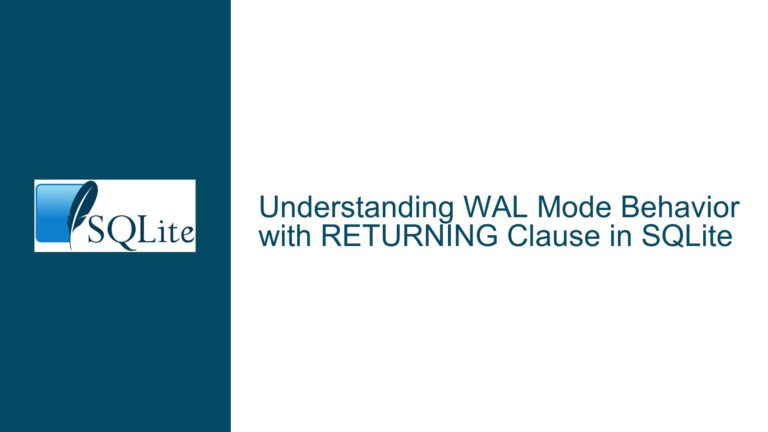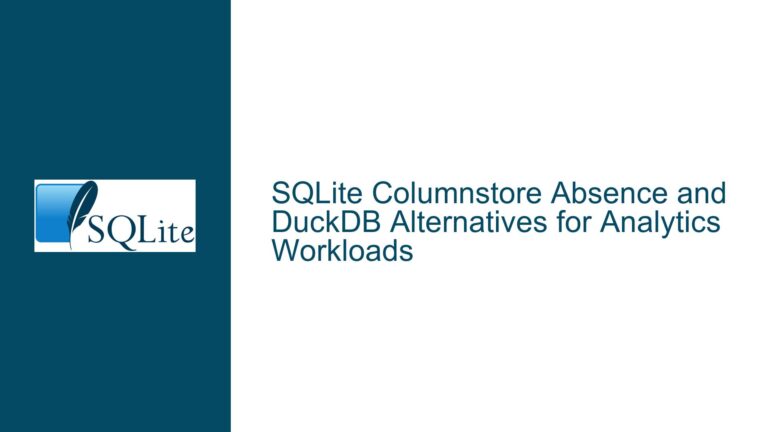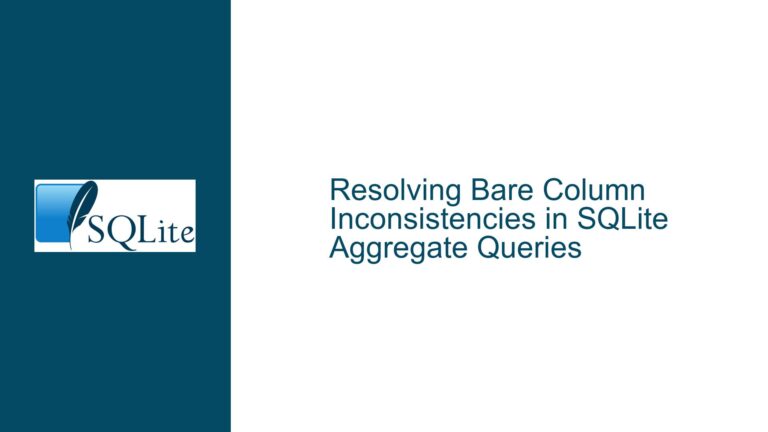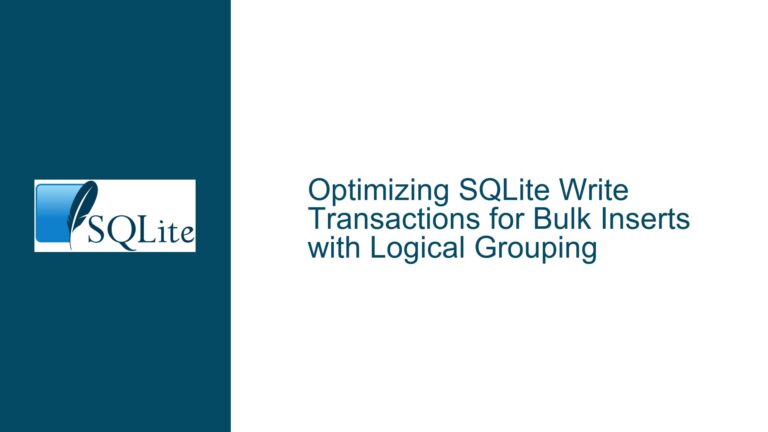WAL Mode Behavior with RETURNING Clause in SQLite
Issue Overview: Deferred WAL Writes on First sqlite3_step with RETURNING Clause When executing an SQL statement with a RETURNING clause in SQLite, particularly in Write-Ahead Logging (WAL) mode, the behavior of the first call to sqlite3_step can be surprising. Specifically, the writes to the WAL file are deferred until the second call to sqlite3_step, contrary…









